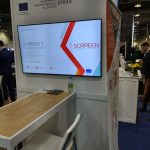In the months leading up to today, the SCRREEN consortium has mapped and analysed experts and stakeholders from different communities and CRM sectors. This information has helped to shape a structured plan for a stakeholders consultation.
The project mapped the main CRM applications in the EU based on literature review and complemented by its own analysis. This was enriched with information on the composition of selected products, import dependence and an overview of current studies on European material flows. The work is documented in a deliverable report prepared under the lead of Leiden University.
Primary and secondary CRM resources in the EU have now been identified. Geological surveys provided information on primary resources which include mines and ore deposits. Secondary resources include mining waste, industrial scrap and other CRM sources. Work is in progress to determine the challenges in getting these geological and industrial resources into the production chain.
The SCRREEN consortium has worked to understand the main existing processing routes of CRM containing feedstocks (primary, secondary and recycling of EoL) in the EU and internationally.
The current recovery rates of these processing routes have been estimated. The main challenges regarding CRM recovery, cost efficiency and environmental issues have been identified.
SCRREEN is investigating the options and innovation strategies for the substitution of CRMs. The initial work focused on the mapping of applications of CRMs and their substitutability. Early work focused on the analysis of substitution strategies for research, development and innovation.
The development of the SCRREEN Knowledge Data platform (EU-CRMKDP) is ongoing, and the Data Management System (DMS) will be soon operational. More information about these systems can be found here.
In June 2017, SCRREEN celebrated its first clustering event. This was an opportunity for 9 coordinators of EU funded CRM projects to exchange knowledge on issues that are related to resources and data management and to think about possible solutions to achieve better coordination and information exchanges.
View SCRREEN's 1st EditionComments are closed.





 The SCRREEN3 project has received funding from the European Union's Horizon Europe Research and Innovation Programme under Grant Agreement N° 101138060
The SCRREEN3 project has received funding from the European Union's Horizon Europe Research and Innovation Programme under Grant Agreement N° 101138060